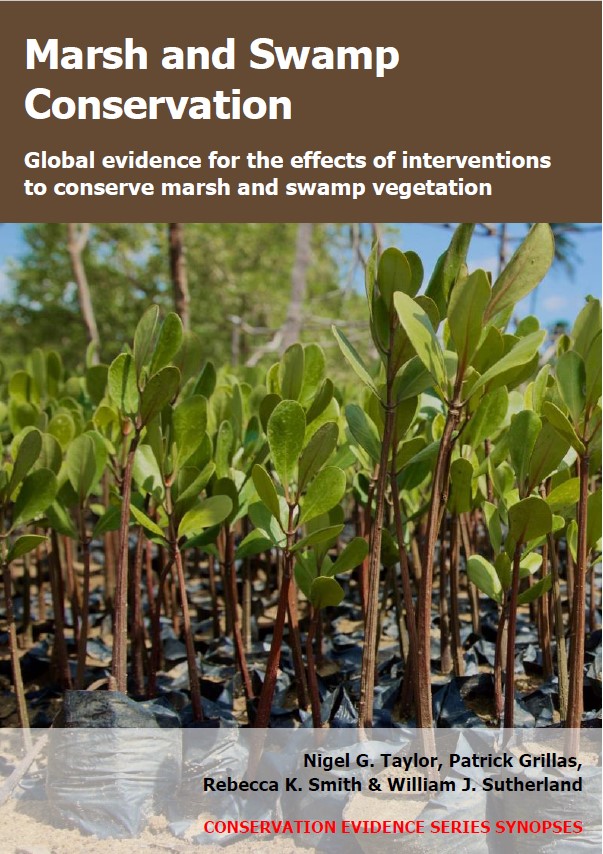Lower water level to restore/create freshwater marshes from other land uses
-
Overall effectiveness category Unknown effectiveness (limited evidence)
-
Number of studies: 2
View assessment score
Hide assessment score
How is the evidence assessed?
-
Effectiveness
70% -
Certainty
39% -
Harms
13%
Study locations
Supporting evidence from individual studies
A replicated, before-and-after study in 1949–1957 in a freshwater wetland in Minnesota, USA (Harris & Marshall 1963) reported that following drawdown of water levels, emergent wetland vegetation colonized the site. Over five years of drawdown, stands of tall emergent plants like softstem bulrush Scirpus validus, cattails Typha spp. and sedges Carex spp. developed on approximately 5,000 acres of 12,000 acres that were previously open water. Elsewhere, exposed mudflats were colonized by species such as marsh fleabane Senecio congestus and red goosefoot Chenopodium rubrum (area not quantified). The study suggested several related factors that affected the type of vegetation that developed, e.g. month of drawdown, soil type (mineral or peat), speed of drying, seed availability, and presence of algal mats. Herbaceous wetland communities present in the first year of drawdown were largely replaced by upland weeds, then woody species, over the following four years. Methods: At some point between 1949 and 1957, water levels were lowered in seven separate wetland pools to stimulate growth of emergent and moist-soil wetland vegetation. Two pools supported islands of emergent vegetation before drawdown. Observations were made after 1–5 years of drawdown in each pool (further details not reported).
Study and other actions testedA before-and-after study in 1987–1992 of a freshwater lake in the Netherlands (ter Heerdt & Drost 1994) reported that following drawdown of the water level, emergent wetland vegetation colonized. Cover of vegetation overall and of individual plant species depended on elevation and length of drawdown. For example, the highest, driest zone (exposed from March/April 1987) developed 63% total vegetation cover after one growing season. It was dominated by broadleaf cattail Typha latifolia (53% of total). After four years, total cover was 103% and the dominant species was great willowherb Epilobium hirsutum (63% of total). The lowest, wettest zone (exposed from April/July 1988) developed 16% total cover after one growing season. It was dominated by swamp ragwort Senecio congestus (87% of total). After four years, total cover was 36% and the dominant species was toad rush Juncus bufonius (28% of total). Zones at intermediate elevation developed 87–109% total cover after four years, dominated by common reed Phragmites australis (51–94% of total). Methods: The water level of Groteplas Lake was lowered from 1987, gradually exposing formerly flooded areas. The highest shoreline zones (with some islands of emergent vegetation before drawdown) were exposed in 1987. The lowest zones (no emergent vegetation before drawdown) were exposed in 1988. Cover of each plant species and vegetation overall were recorded along transects in exposed areas after 1–4 growing seasons (September/October 1987–1992).
Study and other actions tested
Where has this evidence come from?
List of journals searched by synopsis
All the journals searched for all synopses
This Action forms part of the Action Synopsis:
Marsh and Swamp Conservation
Marsh and Swamp Conservation - Published 2021
Marsh and Swamp Synopsis





)_2023.JPG)














